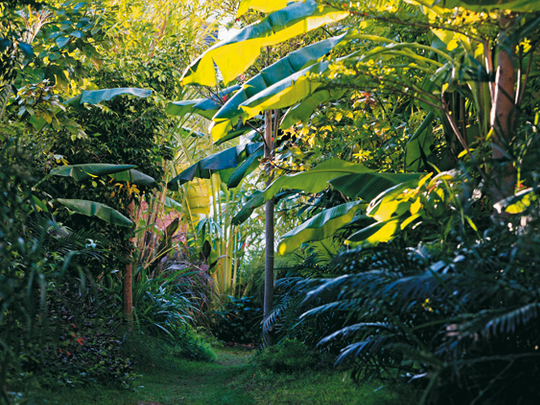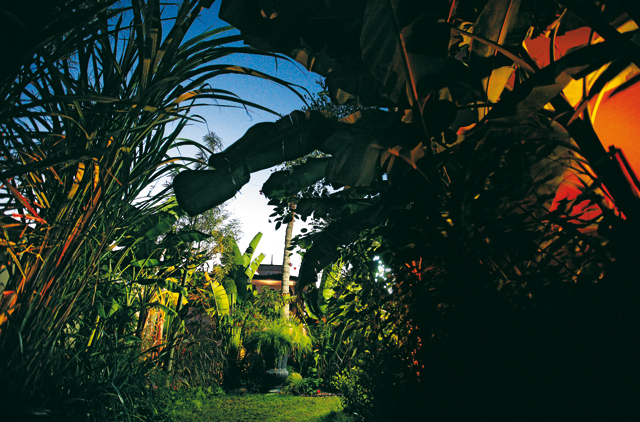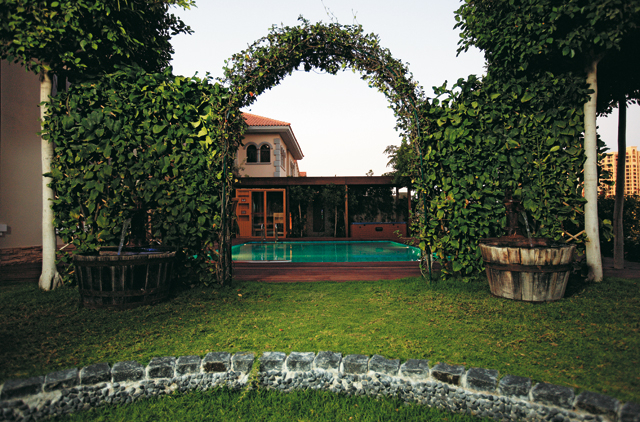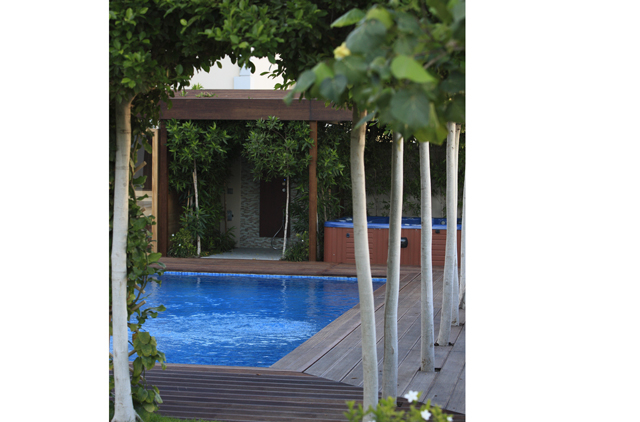
Have you ever been to a place that is so special that it takes you completely out of yourself?" This was the key question asked of me as I discussed the creation of a new garden with the owner of a previously uninhabited villa on the Palm Jumeirah island. My reply was a simple yes.
As a landscape designer and botanist, I have been extremely fortunate to experience many of the world's natural wonders, and have seen and explored first hand all sorts of forests, oceanic islands and wild deserts. All of these natural places have indeed left a profound mark on the way I think and live and have given me the philosophy that plants create places. With this in mind, it is therefore possible to create the feeling of almost any type of environment, given sufficient resources and knowledge.
The owner of the villa flicked through the glossy pages of a number of books with romantic titles such as Italian Grove Gardens, Forests for Relaxation and Pleasure and The Seduction of Trees. It soon became apparent that his home and the environment it was set within would need to be that ‘special place', and the garden would play a key factor in making his expectations a reality. And so it was, that after some lengthy discussions, the design brief for the garden was simply the word ‘forest'.
There were some important elements that needed to be included such as the existing swimming pool and a spa and sauna, but the hard landscaping elements were to be kept minimal. In fact, we really didn't want any hard features at all, just the bare minimum to keep the garden stitched together. The villa would be surrounded in greenery so that the views from the windows always had some sort of foliage in shot. The key views from the windows would have glimpses of the ocean beyond, and the more open areas would simply be grass inter-planted with trees to give dappled canopy shade, texture and depth.
Creating such a garden in the notoriously hot climate of Dubai was not going to be an easy task. Even more challenging was that the garden would need to be created during the scorching summer months so that it would be well-established by the time the house was refurbished and the owner moved in during the coming winter.
Given the sandy shallow soils around the villa, and the requirement for efficient irrigation, I decided that some areas of the garden would need to be elevated and contoured. In addition, all the existing soils would need to be removed and replaced using a mixture of sweet soil and the unique date palm fibre provided by Rootz n Shootz. This medium would help create a soil profile suitable to the types of plantation I wanted to use within the scheme and help lock up water and nutrients essential to the well being of the forest.
For the rear garden I wanted to escape from the tropical look of palms, and try and create a more temperate feel. By creating a slight mound outside the main living room, I used two gnarly ancient Olive trees as focal points. These originated from an ancient grove in Italy, and after a year of acclimatisation in Dubai were my first and most expensive purchase. As soon as we planted these two trees, the garden had its statement, and the rest of the garden took shape from there.
I kept the swimming pool area a little more formal and more European in style by using an avenue of lollipop fig trees which will eventually be shaped with arches to frame the view from the pool to the beach. These are set amongst the wooden decking that surrounds the pool and dance with light during the evenings, imparting a dramatic effect. I also minimised the use of paving by creating a lawn terrace from the rear of the house using black natural granite cobbles as the edging, and planting directly up to the house walls in certain key areas.
For the side garden I decided to go more tropical forest in style by creating a simple pathway with banking on either side to accommodate the overhanging trees. The use of bananas, sugar cane and cycads as under-storey plantation give the dimension and feeling of a secret jungle garden and the imperfection of the natural lawn pathway is fully intended.
The use of fruiting trees, particularly oranges and lemons, set amongst the lush foliage of Gardenias and Ferrari-red Oleanders in the front garden, help give a sense of creative style to the multi dimensional plantation which fully reflects the owner's personality.
After several very hot months of land forming and planting, the garden is now very established and I have been amazed at the few casualties, with only three of the more delicate trees needing to be replaced. Although I started off with a design plan, I always knew that this garden would create itself once the right key components were in place, and that if we pulled it off then the plantation would need minimum maintenance to give the effect we wanted to achieve.
I lost track of the numbers of individual plants we used, but more than 100 species and varieties now flourish together and the garden has a real soul and is full of life. It has become a green sanctuary for wildlife, with many birds having set up home in the overhead trees, and swallowtail butterflies finding their own niche amongst the oranges and flowering shrubs. It is the plants that have definitely created this garden, and for the owner of the villa this place is now very special.











